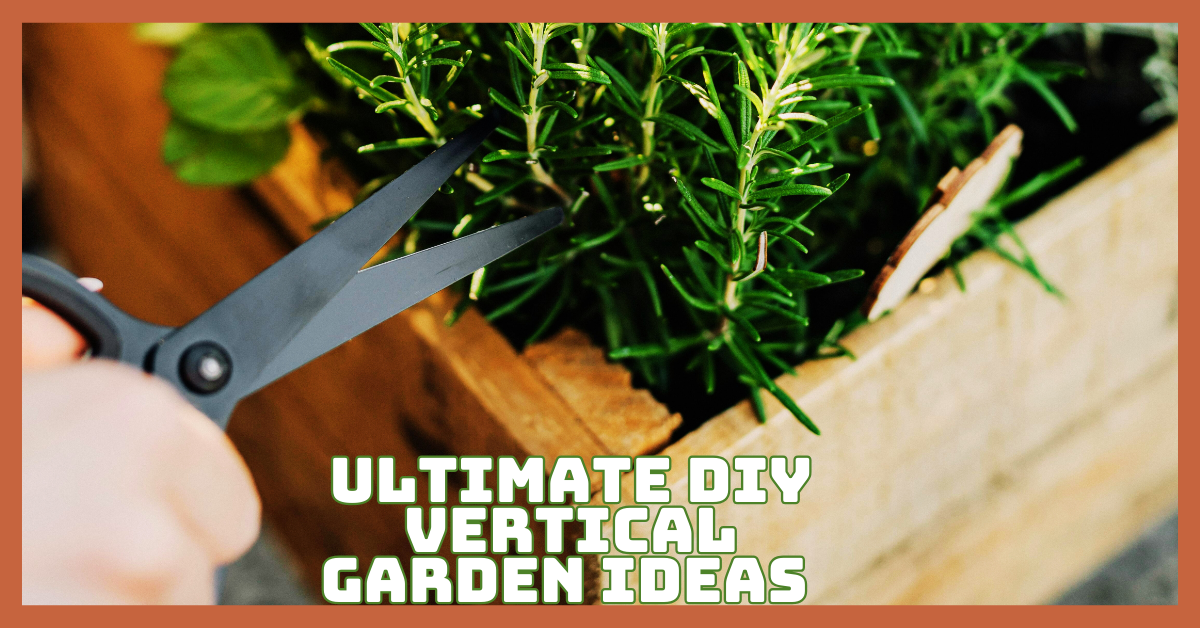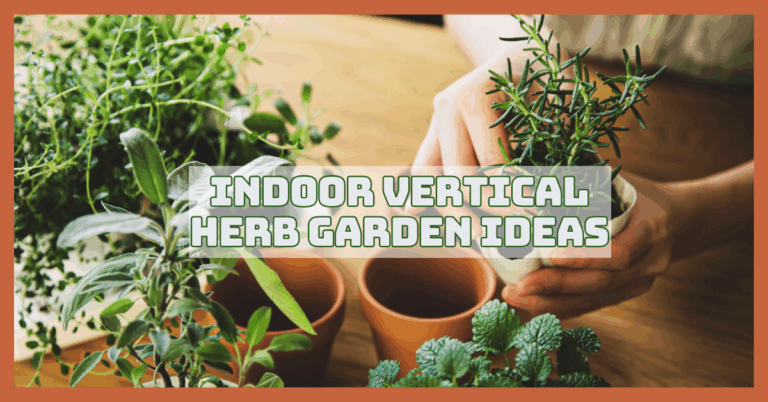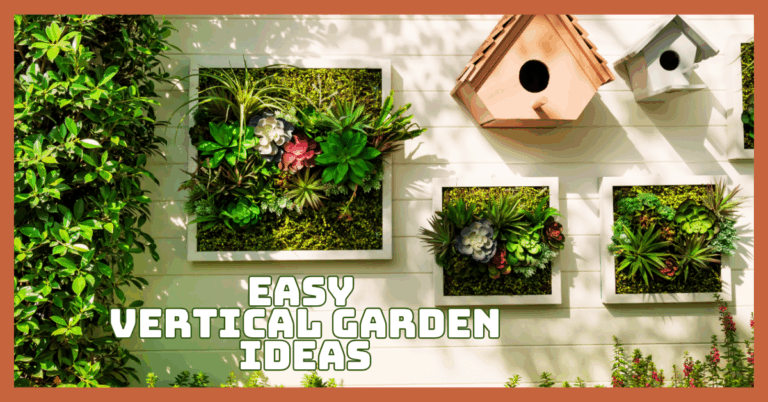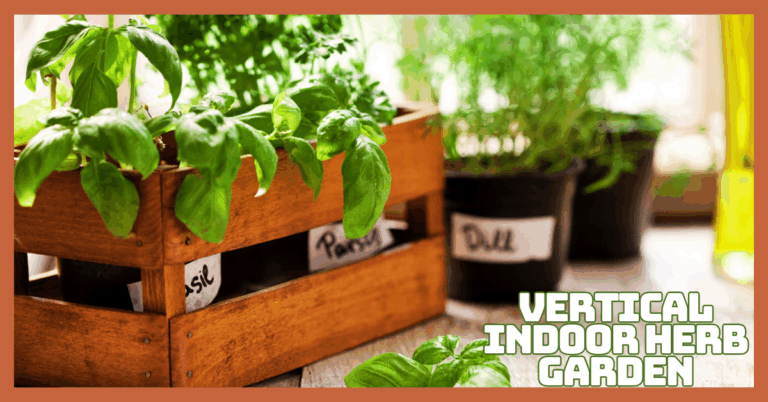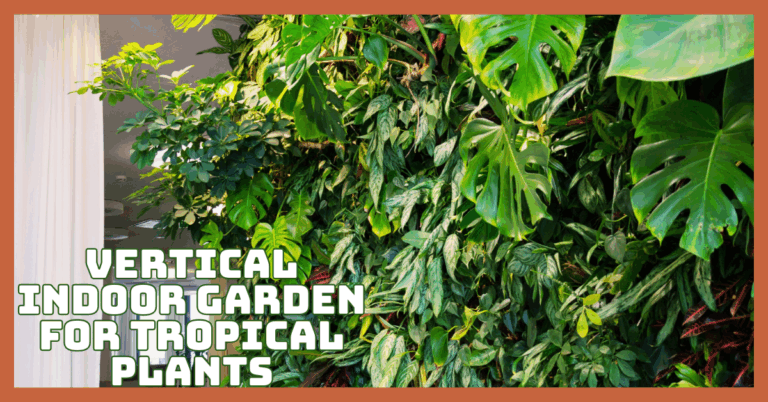Ultimate DIY Vertical Garden Ideas To Transform Your Space
Do you want a new, colourful look for your house or outdoor area? DIY vertical garden ideas are the perfect way to bring greenery into small areas while creating stunning visual appeal.
Whether you’re a beginner or a seasoned gardener, these creative and easy-to-follow DIY vertical garden projects will inspire you to transform any wall into a lush, living masterpiece that brightens your environment and boosts your mood.
DIY Vertical Garden Ideas
1. Hanging Shoe Organizer Garden
What You’ll Need
You’ll need a canvas or plastic shoe organizer with multiple pouches, potting soil, small plants like herbs or pansies, a sturdy wall or fence, hooks or nails for hanging, a watering can, garden scissors, and optional landscape fabric for extra drainage control.
Choose breathable materials and ensure the wall receives good sunlight. Waterproof backing is proper if hanging indoors to avoid moisture damage.
How To Build
Start by securing the shoe organizer to a fence, balcony railing, or wall using hooks, screws, or nails. Line each pocket with landscape fabric if needed to prevent soil leakage.
Fill each pouch halfway with potting soil, gently insert plants, and top off with more soil. Press lightly to secure plants. Water each pouch carefully to avoid runoff. If mounting indoors, add a drip tray at the bottom. Regularly prune and check for signs of pests or dehydration.
Pro Tips
Use a lightweight potting mix to avoid stress on the fabric. Hang in full or partial sun, based on plant choice. Avoid overwatering—pouches can retain moisture. Rotate herbs regularly for even growth. Use edible flowers or fragrant herbs to make it both functional and beautiful.
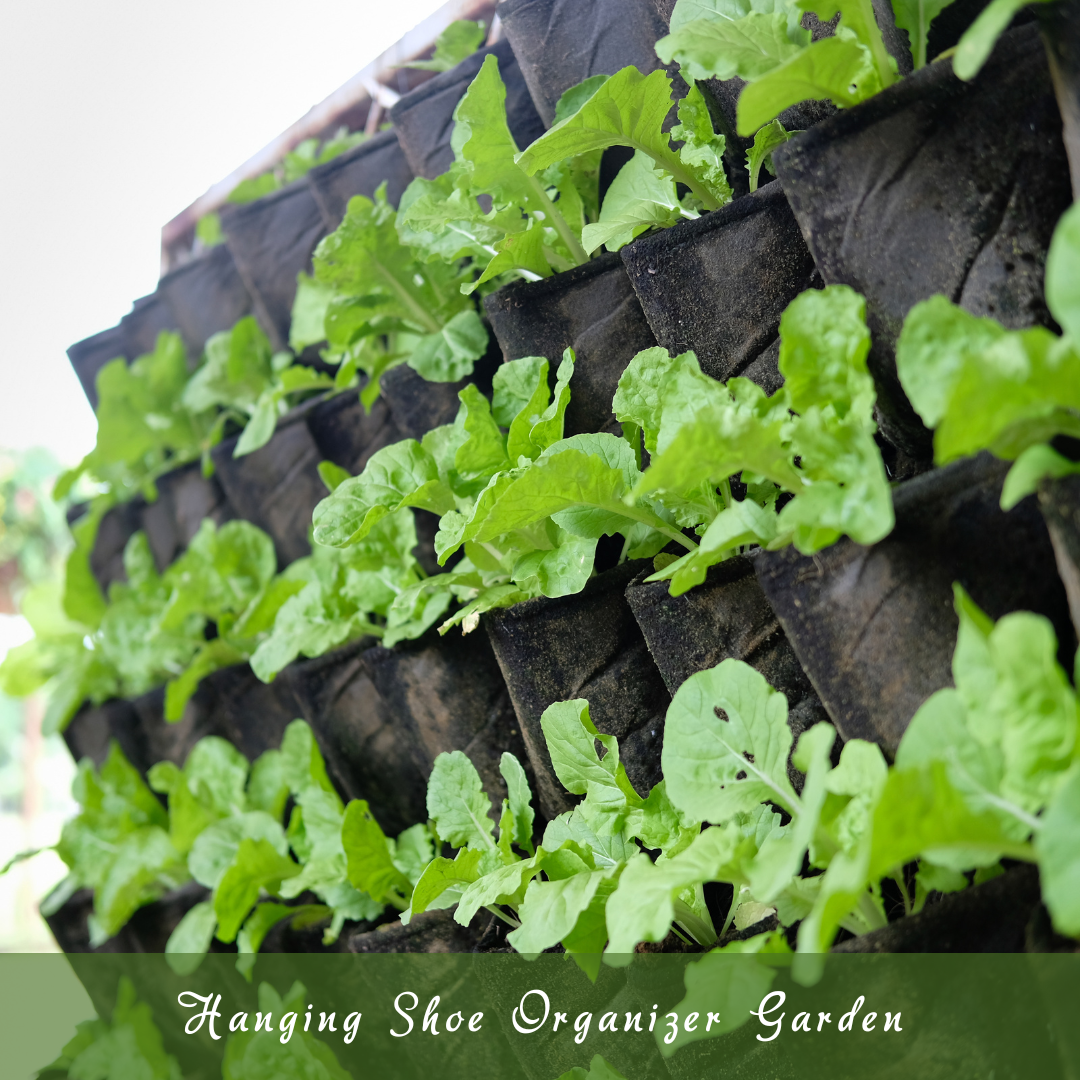
2. Hanging Gutter Garden
What You’ll Need
Gather 3–5 gutter sections (PVC or metal), metal chains or rope, brackets or strong hooks, a drill, screws, a level, potting soil, and small plants like strawberries or herbs.
You’ll also need end caps for the gutters, a handsaw (if cutting to size), and optional weatherproof paint. Choose a location with strong overhead support and adequate sun exposure for the best plant health.
How To Build
Drill drainage holes every few inches along the gutter bottoms. Attach end caps. Suspend gutters using rope or metal chains, attaching them to a beam or sturdy structure with hooks or brackets.
Space gutters vertically so sunlight can reach each level. Use a level to ensure even hanging and prevent water pooling. Fill each gutter with potting mix, gently plant shallow-rooted greens or flowers, and water. For added convenience, install a drip irrigation line running through the gutters for hands-free watering.
Pro Tips
A hanging gutter garden is excellent for compact balconies or patios. Use cascading plants for beauty and coverage. Clean gutters monthly to avoid buildup. Space tiers are wide enough for airflow.
Choose UV-stable materials to prevent cracking. Plant mint, spinach, or trailing flowers for a productive, low-maintenance vertical display.
3. Pallet Planter Wall
What You’ll Need
You’ll need one sturdy wooden pallet, landscape fabric, a staple gun, potting mix, shallow-rooted plants like lettuce or flowers, a screwdriver, optional wood paint or sealant, screws or brackets for mounting, a drill, and gloves.
Ensure the pallet is clean and free from toxic wood treatments. Decorative stencils or paint can personalize your vertical garden with names or floral patterns.
How To Build
First, clean and sand your pallet. Line each level's back, bottom, and sides with landscape fabric to hold the soil. Secure the fabric tightly with a staple gun.
Fill each pocket with soil and insert plants, gently pressing to hold them in place. Water lightly. Let the pallet lie flat for a week to let the roots settle.
When plants are stable, stand them up straight and use brackets or screws to fasten them to a wall or fence. Seal exposed wood if the pallet will remain outdoors.
Pro Tips
Choose fast-growing greens like spinach or arugula. Place heavier plants at the bottom for stability. Avoid tall species that overshadow others.
Paint the pallets to match your décor. Add mulch to retain moisture. Great for renters—pallets can be moved seasonally or placed on wheels.

4. Mason Jar Wall Garden
What You’ll Need
Mason jars, a wooden board or pallet, hose clamps, screws, a drill, potting soil, small plants like herbs or succulents, pebbles for drainage, optional chalk labels, and a protective finish for the wood. A level and wall anchors will help mount the board securely. Use wide-mouth jars for better airflow and easier planting.
How To Build
Attach hose clamps to the wooden board in evenly spaced rows. Tighten each clamp slightly so it can hold the jar snugly.
After filling each jar with potting soil and adding rocks at the bottom for drainage, plant the succulents or herbs you choose.
Slide jars into the clamps and tighten fully. Mount the entire board on a kitchen wall, balcony, or fence using wall anchors and screws. Make sure it’s level and stable. Label each jar for easy plant identification and care.
Pro Tips
Use low-water plants like mint or thyme. Don’t overwater—jars lack drainage holes. Clean jars monthly to prevent algae.
Keep away from direct afternoon sun indoors. Add colour-coded labels or paint for a fun look. The mason jar wall garden is ideal for kitchens or patios with limited planting space.
5. Trellis And Climbing Plant Wall
What You’ll Need
A wooden or metal trellis, climbing plants like beans, jasmine, or clematis, potting mix, a trowel, a garden hose or watering can, garden twine, mounting hardware, gloves, and optional mulch.
Choose a sunny wall or fence and plants appropriate for your climate. A soil testing kit may help select the best fertilizer and positioning.
How To Build
Install the trellis against a wall or fence using heavy-duty brackets or screws. Prepare the soil or planter box at the base with compost-enriched potting mix.
Plant one or two climbing plants at the base, and gently tie their stems to the trellis with twine to encourage upward growth.
Water thoroughly. As vines grow, continue securing new shoots to guide their path. Trim and train regularly for even coverage and better air circulation throughout the wall.
Pro Tips
Choose fast-growing climbers for quick results. Space plants to reduce competition. Water the base, not the foliage, to prevent mildew.
Prune regularly for shape and airflow. Install string lights or small décor between vines for added charm. Works well for privacy or dividing outdoor areas with greenery.
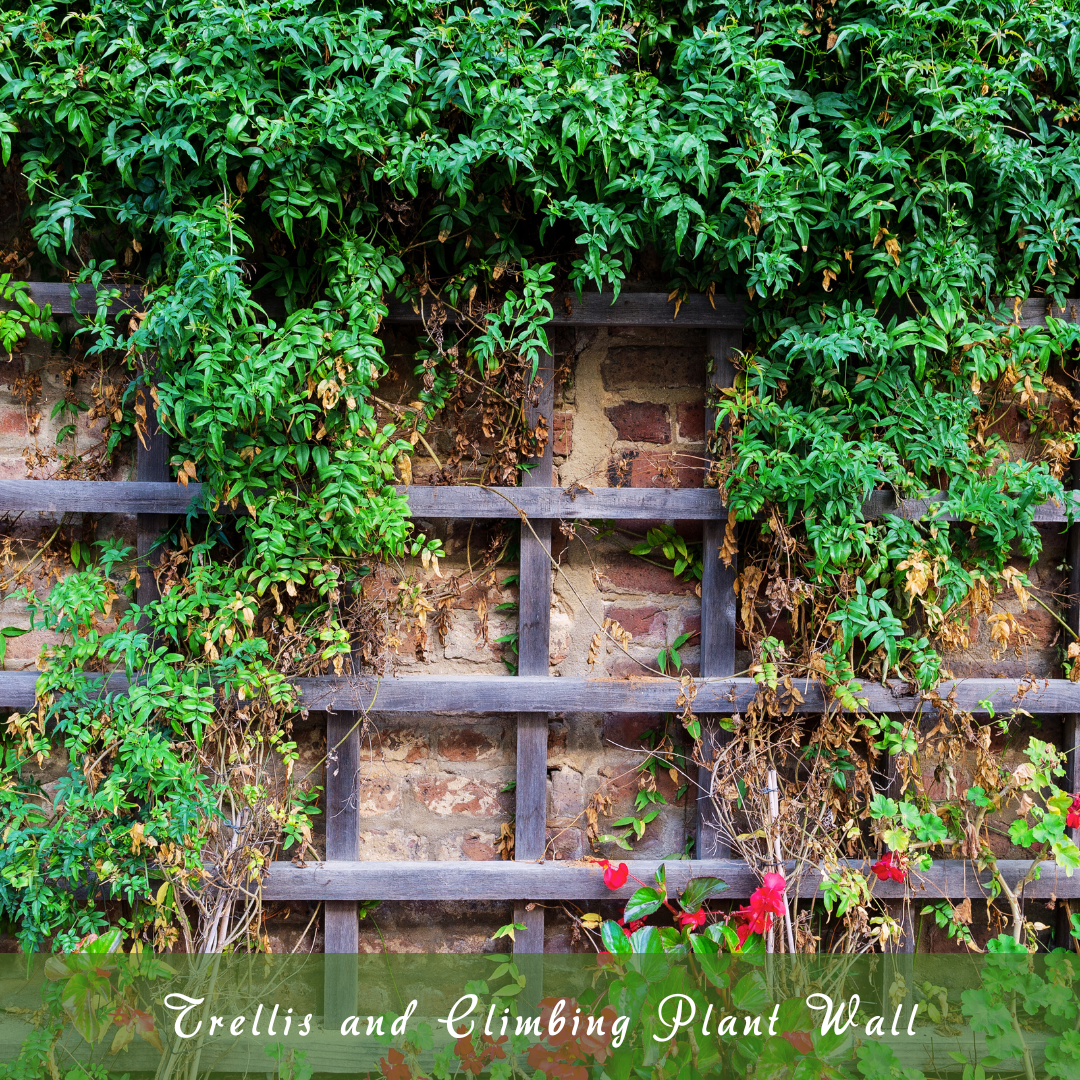
6. PVC Pipe Tower Garden
What You’ll Need
Wide PVC pipes (4–6 inches in diameter), a drill with a hole saw attachment, end caps, potting mix, a funnel, a saw, gravel or stones, plants with shallow roots, and a bucket or container for support.
Optional: a central irrigation pipe with small holes for easy watering. Choose UV-resistant PVC if placed outdoors.
How To Build
Cut PVC pipes to your desired height (3–5 feet works well). Drill staggered planting holes along the sides. Cap the bottom and fill it with gravel for drainage.
Fill the rest with potting mix using a funnel. If using a central watering tube, place it in the middle first. Insert small plants into the holes and press soil gently around the roots. Anchor the tower in a weighted pot or bucket. Water slowly from the top or use the inner tube for even distribution.
Pro Tips
The PVC pipe tower garden is excellent for leafy greens or herbs. Rotate the tower weekly for sunlight exposure. Secure base with bricks if windy.
Add compost tea every two weeks to enrich the soil. Keep an eye on water retention—the top dries faster. Wipe the pipe monthly to prevent mould or algae buildup.
Turn Your Passion for Nature Into Income
🌿 Whether you love gardening, caring for animals, or exploring holistic living,
You can share your knowledge online and earn from it.
Discover how nature lovers are growing their passions into meaningful, income-generating blogs. 👇
7. Ladder Shelf Garden
What You’ll Need
An old wooden ladder, sandpaper, outdoor paint or sealant, wooden planks for shelving, screws or nails, a drill or screwdriver, and potted plants.
Optional: hooks for hanging tools, vines, or decor. Ensure the ladder is sturdy and tall enough to hold at least three tiers. Choose plants suited to your space’s light and weather conditions.
How To Build
Sand the ladder thoroughly, then paint or seal it for weather resistance. Cut planks to fit across each step and screw or glue them in place to form shelves.
Arrange your plants in pots on each level, placing larger or heavier ones at the bottom. If outdoors, anchor the base for stability.
Indoors, lean the ladder securely against a wall. Add hooks to the sides for tools or trailing plants to enhance utility and visual appeal.
Pro Tips
Use lightweight containers on higher shelves. Group plants with similar watering needs. Keep the ladder out of strong winds. Add fairy lights for ambiance.
Great for balconies or patios—just rotate pots occasionally to ensure even light. Clean shelves each season to prevent mould or soil buildup.
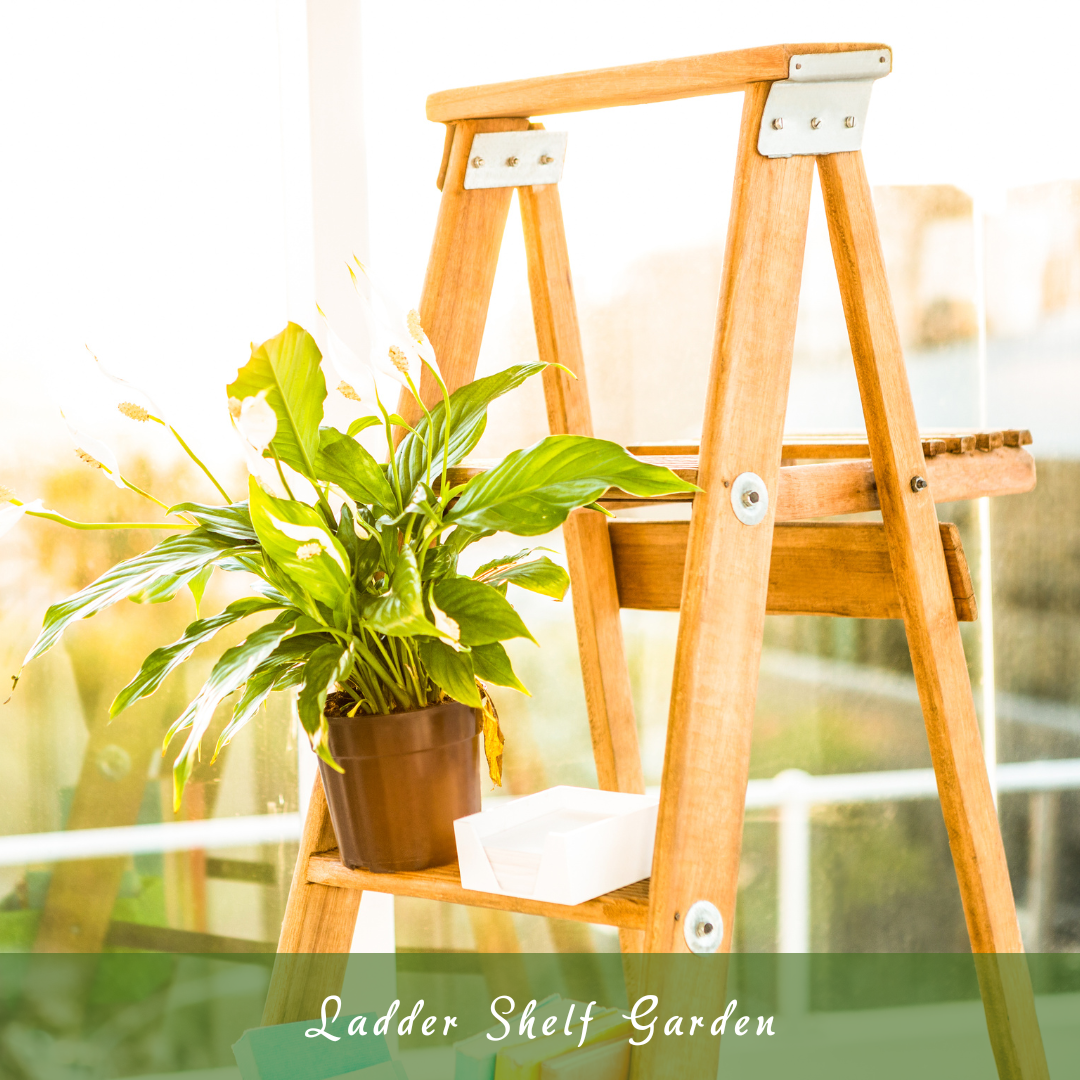
8. Pocket Felt Planter
What You’ll Need
Purchase a vertical felt wall planter with multiple pockets. You'll also need mounting hardware such as screws or heavy-duty hooks, a drill, potting soil, shallow-rooted plants (like herbs, lettuce, or flowers), and a watering can.
For added protection indoors, consider a waterproof backing. Optional items include mulch to retain moisture, labels for plant identification, and gloves to keep your hands clean during planting and mounting.
How To Build
Use screws or strong hooks to mount the felt pocket planter on a wall, fence, or railing. Ensure the structure behind it can support the weight of wet soil and plants.
Fill each pocket about three-quarters full with potting mix. Gently insert your plants and top with more soil to secure them.
Water slowly to saturate evenly. Be cautious not to overwater as excess may drip down. If installing indoors, place a tray or mat underneath to catch moisture. Regularly check soil moisture and prune plants for best results.
Pro Tips
Stick with compact or trailing plants to prevent overcrowding. Rotate plant types each season to refresh the look. Avoid planting heavy root vegetables.
Mount where there’s good air circulation. Clean the fabric every few months. Water gently to prevent runoff from damaging lower pockets or your wall.
9. Crate Stack Garden
What You’ll Need
Gather three to five wooden crates, a screwdriver or drill, screws or nails, outdoor sealant or paint, sandpaper, potting mix, landscape fabric, bricks or pavers for leveling, and your chosen plants.
Optional items include wheels for mobility, decorative stencils for crate labelling, and mulch to reduce evaporation. Make sure the crates are made of untreated wood if you plan to grow edibles like lettuce, strawberries, or herbs.
How To Build
Sand each crate to smooth rough edges and apply sealant or outdoor paint for protection. Stack crates in a tiered or pyramid shape on a level surface, using screws or brackets to secure them.
Line each crate with landscape fabric to hold soil and improve drainage. Fill with potting mix and plant your herbs, flowers, or veggies.
Place heavier crates on the bottom for stability. Water slowly and evenly. For added convenience, attach small wheels underneath the bottom crate to allow easy repositioning throughout the season.
Pro Tips
Perfect for patios or small backyards. Mix edible and ornamental plants for function and color. Keep an eye on stability in windy weather.
Repaint annually to maintain appearance. Rotate the stack occasionally for even sunlight. Line crates well to avoid soil leakage and pests from entering exposed wood.
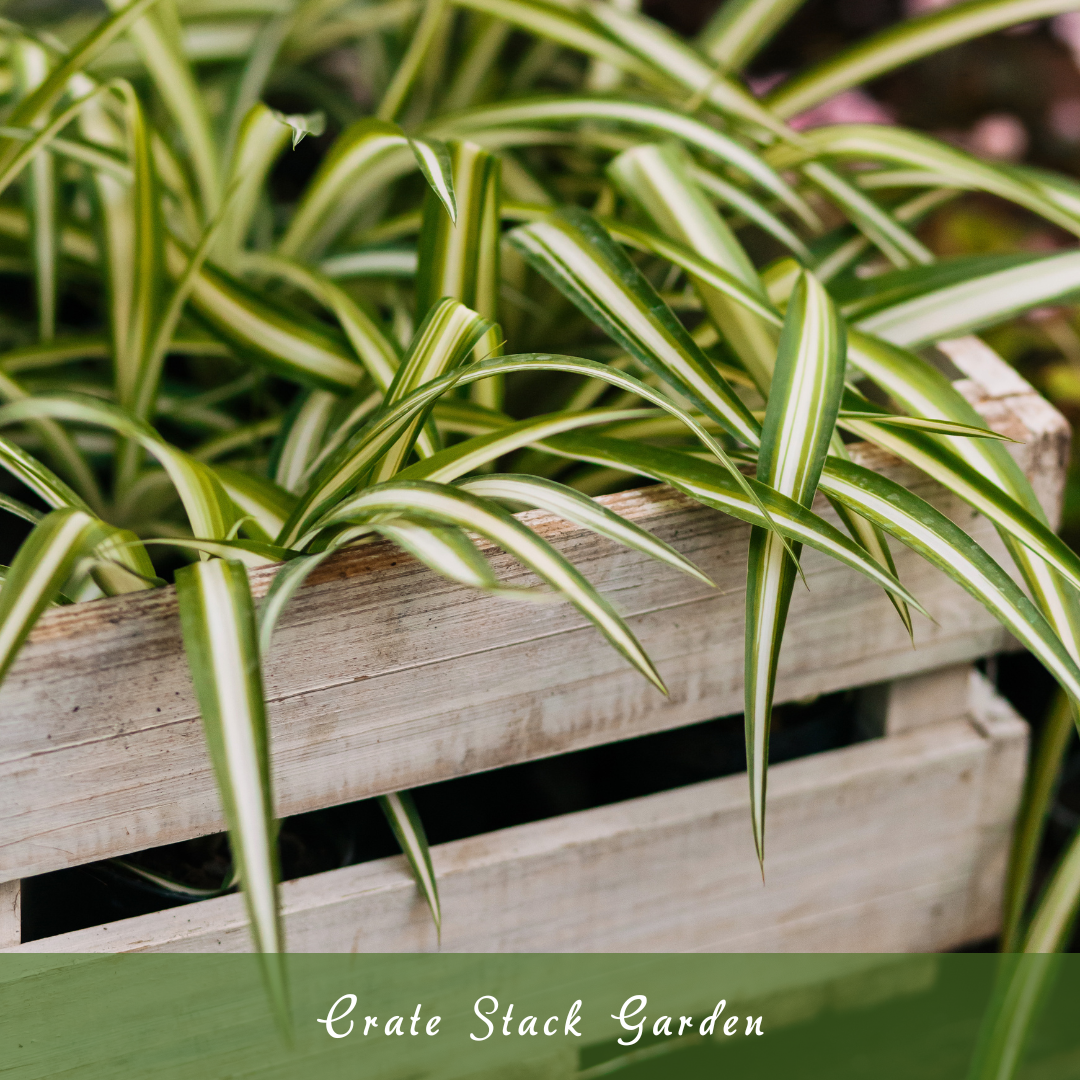
10. Recycled Bottle Garden
What You’ll Need
Collect several 2-litre plastic bottles, strong twine or wire, scissors or a utility knife, a drill, potting soil, shallow-rooted plants (like basil or lettuce), a frame or fence for hanging, and pebbles for drainage.
Optional: waterproof labels, paint for decorating bottles, and a watering can. Clean each bottle thoroughly and ensure they’re not brittle from sun exposure before beginning.
How To Build
Clean bottles and remove labels. Cut a rectangular window into each bottle’s side to create a planting area. Make tiny drainage holes in the bottom and thread twine through the holes on either end.
Place pebbles at the bottom and potting soil on top. Lightly water your plant after adding it. Thread and tie bottles vertically to a frame or fence, spacing them so sunlight can reach each.
Make sure the knots are tight to support the weight. Water carefully from the topmost bottle to allow trickle-down hydration.
Pro Tips
A recycled bottle garden is ideal for school or balcony gardens. Replace worn bottles each season. Use clear bottles for light, or paint them to reduce algae.
Add a small compost bin nearby. Easy to expand vertically as your garden grows. Keep a watering schedule since small soil volumes dry out quickly.
11. Pallet Garden
What You’ll Need
A wooden pallet, landscaping fabric or plastic sheeting, a staple gun or nails, potting soil, plants such as herbs, succulents, or flowers, spray paint or wood sealant (optional), gloves, and screws or hooks for mounting. Select a pallet free of chemicals, and ensure it's clean and sturdy. Use landscaping fabric to hold soil inside the slats.
How To Build
Lay the pallet flat and staple the landscaping fabric tightly over the back and sides to create a soil container. Flip the pallet upright and fill each slat section with potting soil.
Plant your desired plants directly into the slats. Using screws or hooks, firmly attach the pallet to a wall or fence. Water carefully from the top, letting moisture trickle down to lower plants. Use paint or sealant to protect the wood from the weather if outdoors. Ensure the pallet is level and stable.
Pro Tips
Choose drought-tolerant plants to avoid overwatering. Rotate the pallet occasionally for even sun exposure. Use a lightweight soil mix to reduce overall weight.
Avoid placing a pallet in heavy wind areas. Protect the bottom from water damage by elevating it slightly off the ground. Clean annually to prevent mould buildup.
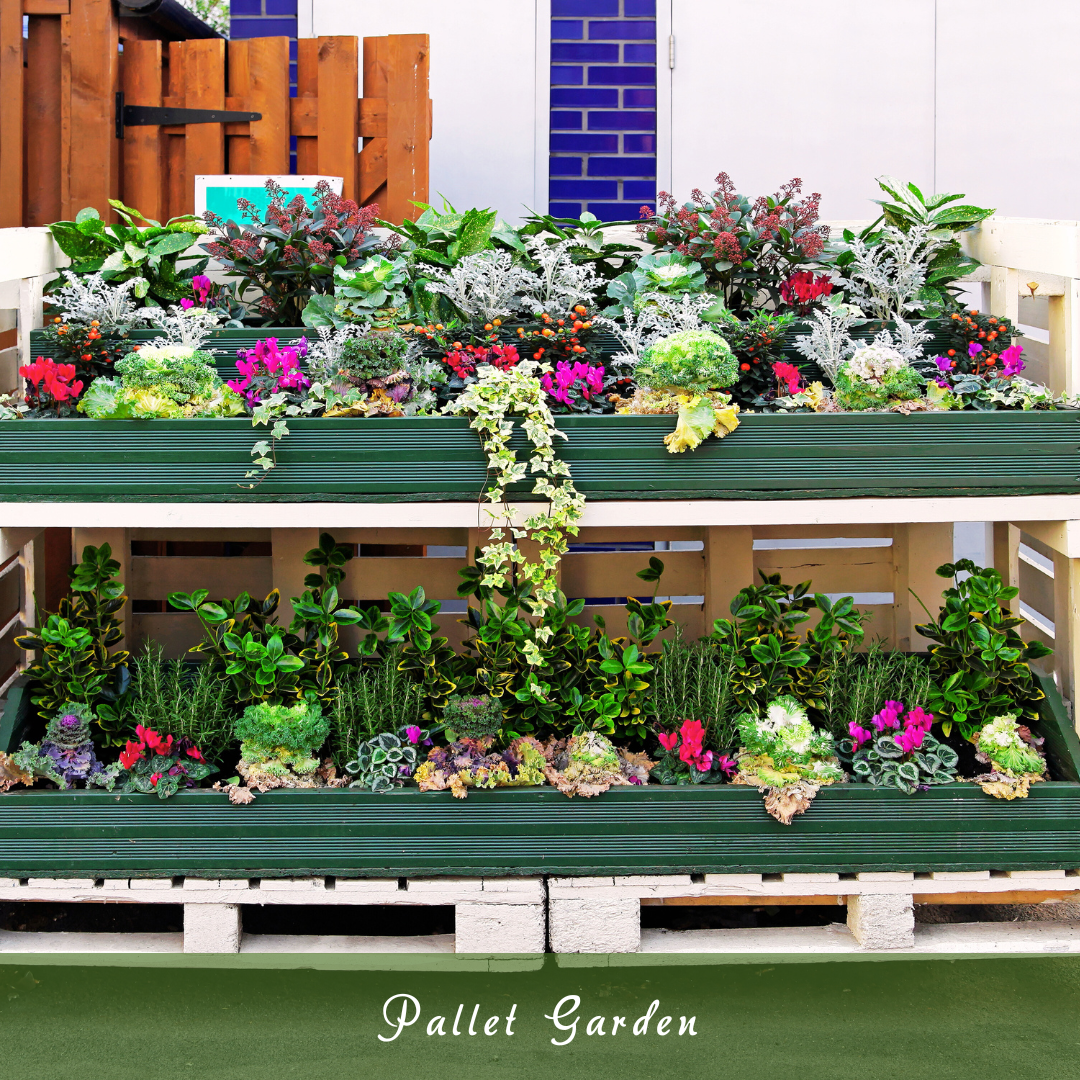
12. Bamboo Tube Vertical Garden
What You’ll Need
Several bamboo tubes or poles cut into 12-18 inch sections, strong wire or rope, potting soil, small plants, a drill for drainage holes, a wooden frame or wall for mounting, and hooks or nails. Use untreated bamboo or seal for outdoor durability. Select small plants with shallow roots, like succulents or herbs.
How To Build
Make drainage holes in each bamboo tube's bottom. Securely mount or build a wooden frame on a wall or fence. Attach bamboo tubes vertically or horizontally with wire or rope, ensuring each is firmly tied.
Fill tubes with potting soil and plant your chosen greenery. Water lightly, letting extra water run off through the perforations.
Group tubes closely for a dense, lush look. Monitor moisture levels and replace plants as needed. Seal the bamboo annually to extend its lifespan outdoors.
Pro Tips
Bamboo adds natural charm and durability. Avoid heavy plants that may topple tubes. Position in partial sunlight to prevent bamboo cracking. Regularly check ties for wear. Use organic mulch to retain moisture. Combine with trailing plants for a cascading effect. Perfect for tropical or zen-style gardens.
FAQs
Q1: What Is A Vertical Garden?
A vertical garden grows plants upward on walls, fences, or special structures. It saves floor space and brings greenery to small areas.
Q2: What Plants Are Best For Vertical Gardens?
Succulents, herbs (like basil and mint), leafy greens, ferns, and trailing plants such as pothos work well due to their size and growth habits.
Conclusion
With these inspiring DIY vertical garden ideas, creating your own green oasis has never been easier or more rewarding. Whether for indoors or outdoors, vertical gardens save space and add natural beauty to any setting.
Enjoy the advantages of clean air, brilliant colours, and a tranquil setting by beginning your project. Enjoy gardening and see how it brings your place to life!
I trust you enjoyed this article on the Ultimate DIY Vertical Garden Ideas To Transform Your Space. Please stay tuned for more inspiring guides, helpful tips, and ideas to help you live closer to nature every day.
Take care!
— JeannetteZ
💬 Your Opinion Is Important To Me
Do you have thoughts, ideas, or questions? I’d love to hear from you. Please leave your comments below or email me directly at Jeannette@Close-To-Nature.org.
📚 More Nature-Inspired Reads
Explore more ways to connect with nature, nurture your pets, and live in harmony with the world around you 🌿

